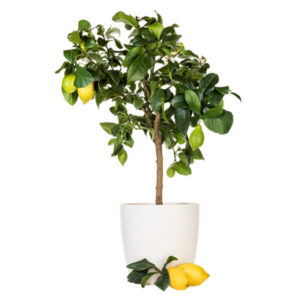It is very rewarding to grow any type of citrus tree in your yard. They not only look great, but they also give you your own homegrown fruit. The dream of having a lemon tree in your backyard was once a part of Australian life. We have started to experiment with mandarins, blood oranges, and limes. No matter which type of citrus tree, we all want them healthy and growing all year. We will be discussing how to keep your orange tree healthy and growing.
[read_more message=”read more…”]
Important Tree Care
Citrus trees have been bred for their ability to bear fruit. It can be thrilling to see newly planted trees bear their first year of fruit and flowers. A young tree should focus its first years on growing in size and establishing a healthy root structure. This will allow the young citrus trees to become more stable in your garden, and also make them more drought-resistant and wind-resistant. However, fruit-bearing can put a strain on your tree’s resources so we recommend that you remove the first “crop” of fruit as soon as possible. This will make your tree more resilient and productive over the long term.
Watering Citrus Trees
Watering citrus trees correctly is one of the most important aspects of its care. Citrus trees must be watered well and deeply. A few times a week, you will see a difference in the health of your citrus trees. We recommend that you water your plants once per week with good, deep watering. You can water citrus that has been planted in soil or by hand. Before planting, ensure that the area is well-drained. Poor drainage can lead to excess water being absorbed by your tree.
Citrus plants in containers should be watered when the soil is dry or slightly damp. Again, the drainage of the container should be perfect. Watering citrus trees should be evenly applied, regardless of whether they are in a container or ground. They shouldn’t have soil that is more than one day dry.
Fertilising Lemon, Lime and Orange Trees
Citrus trees, like all trees and plants, need to be fertilised regularly to ensure strong, healthy growth. This helps produce higher quality fruit crops. Citrus trees can be heavy feeders, especially once they produce fruit. Apply a citrus tree specialised formulation to the drip area of the soil in late Winter and early Spring. The soil directly under the branches or bush is called the drip area. After feeding, you should water the tree thoroughly.
Additionally, plants absorb nutrients faster through their leaves than through their roots. You can liquid feed the plants over the leaves and soil if you require immediate results. Foliar feeding is also known. Foliar feeding is when you fertilise in the morning or late at night to prevent leaf burn.
Pay attention to the directions on your fertiliser package, especially when spraying citrus trees. The instructions will show you how to apply the fertiliser and how much you should use. The size, age and amount of fertiliser you use will all impact how much you apply. Don’t give it too much at once. Always divide the amount by 3. If in doubt, you can use less than recommended.
Use granular fertiliser to lightly rake into the top inch of soil. Before and after you apply the fertiliser, water the entire area under the tree.
For the first year, newly planted trees do not require fertiliser. Wait at least one year before you use soluble fertiliser on them.
When to Fertilise
Three applications of soluble fertiliser are required for mature citrus trees. Fertilising should be done in the Winter, Spring, and Summer.
Fertiliser Types
Specially formulated fertilisers for citrus trees are the best. They provide all the nutrients that the trees require. Organic fertilisers can also be found that contain the same nutrients. There are many options for citrus fertilisers. Granular fertilizers are the most common, but liquid and spike varieties are also available.
What are Macronutrients?
To grow healthy, citrus trees require potassium, phosphorus, and nitrogen. These are called macronutrients, or NPK. For a healthy tree, and good crops, nitrogen is the most critical macronutrient.
What are micronutrients?
Citrus trees need micronutrients in addition to macronutrients. These micronutrients are essential for tree health. These micronutrients are zinc, iron, and manganese.

You can keep your tree healthy with pest and bug control
Plants are vulnerable to pests and diseases like any other living thing. Citrus tree is no different.
Rot
Citrus roots can easily rot if the soil is clay-based or heavy. Collared rot, which is also known as citrus bark decay, can cause the tree to lose its most valuable parts. An organic mulch layer can help increase air flow to the soil. Spraying citrus trees with a specialized fungicide is the best way to protect them against root and collar rot.
Citrus Scab
These are brown scabs that appear on the skin of citrus fruits (especially lemon). Citrus Scab is the name for this condition. If you are not using the fruit’s rind, you can either remove the scabs or keep them from growing. Although you can ignore the condition, many people spray a solution of copper oxide and oil to eliminate the disease before it spreads.
Bronze Orange Bugs
The most common pests that attack citrus trees are bronze orange bugs. These bugs are also known by the name stink bugs. These bugs can be removed by hand, or with a vacuum cleaner if you have a disposable bag attachment. These bugs can be irritating so you might want to spray them with pest oil.
Citrus Gall Wasp
Citrus gall wasps are also pests that can be found on citrus trees. The wasp causes a variety of lumps on the branches. Although it will not kill the tree, it’s best to get rid of any areas with lumps. To control this pest, we recommend that galls be pruned by August’s end.
Citrus Leafminer
The leafminer, a tiny insect that tunnels through new leaves, is called a leafminer. The Eco Oil can be used to spray your tree every fortnight from Spring through Autumn to deter them as well as other insects such as mealy bugs, sooty mould and scale.
Pollinating Citrus Trees
Citrus blooms in winter, and there is often no insect population to pollinate them. Indoor plants and balconies can also pose a problem because they might not be easily accessible to insects. You must assume the role of pollinator for insects by yourself. To move pollen from one flower to another on each plant, you can use an electronic pollination tool. This step is crucial for growing fruit, and it’s often overlooked by people new to growing citrus or fruit plants.
Pruning to Maintain Your Tree’s Growth
To produce good fruit, citrus plants do not require special pruning. Regular pruning is necessary to remove diseased and dead wood, as well as pest-infested wood. After harvest, trees and plants should be pruned to the desired size. You should not give your plants a complete “haircut”, as this could cause them to lose next year’s crop. Instead, trim the low-hanging branches and branches that rub against each other and cause bark damage.
If the tree is producing too many crops, you can prune it. Heavy crops can cause branches to break down, especially after heavy rain. To reduce the weight of some branches, you can either remove them or trim some. You can avoid a heavy crop by cutting out some of the younger, growing fruit before they get too big. This will allow the tree produce more fruit.
Harvesting Fruit Trees
Different varieties of citrus trees have different characteristics which make harvesting citrus a similar process. Citrus doesn’t ripen after being picked so it is best to pick fruit when it is ripe and ready for use.
When is the best time to harvest citrus fruit?
Many citrus varieties can be picked in winter. Like most fruit trees, lemons and limes are ripe periodically, so they can still be picked all year. However, a taste test is the best way to determine ripeness.
The Importance Of Colour In Harvesting
It is a good rule of thumb to remember with fruit trees is that citrus fruits are not ripe until they reach their final colour. Sometimes, it may take longer. Overripe limes can turn yellow and lemons yellow before they are fully ripe. While grapefruit and oranges can be more easily identified by their colour, the final judge is still the flavour.
Weather and Harvesting Considerations
Did you know that short cold snaps, which don’t reach freezing temperatures, can drive the production of additional sugars? This makes the fruit sweeter. Frost can cause citrus fruits to become icy and affect their texture and taste. Frosted citrus cannot be repaired or recovered and can begin to degrade. Fast picking is the best way to save your fruit if it is nearing freezing.
Harvesting Oranges, Lemons and Limes Late
You can damage the next season’s blossoms by leaving ripe fruit on citrus trees. Although citrus trees will eventually die, the fruit that is left behind can attract pests, fungus, and even root rot. Even if the fruit doesn’t fall, it will still dry out and begin to decay. It is best to harvest your citrus early.
It’s a satisfying job to harvest the fruits you have grown in your garden. It is important to pay attention to colour but let the fruits’ taste guide you in making the right choice. Be aware of the weather conditions and pick your fruit before it freezes. Pick your fruit before it turns brown and falls.
Troubleshooting
Sometimes, citrus trees can become sickly. We will discuss how to care for your citrus tree.
Yellowing Leaves
A variety of conditions can cause yellowing of leaves. An indicator of magnesium deficiency may be yellowed leaves with an older age. The soil around the tree can be treated with Epsom salts/magnesium sulfurate.
The yellowing of the leaves at the tips indicates a lack in fertiliser for most fruit trees.
The signs of iron deficiency or lack of food, as well as yellowing of younger leaves, can include: This issue can be addressed by feeding blood and bone, citrus foods, iron chelates and sulphur at the same time.
Dropping Fruit
Strong winds can cause problems during flowering, or shortly afterwards while fruit is being formed. This can also be caused when there is too much or too little water during flowering, or while the fruit is forming. This can be fixed by checking the soil for excess moisture or turning on the sprinkler twice per week to provide adequate water.
Sour Oranges
Too early harvesting can lead to bitter oranges. It is better to leave the fruit on the tree for a bit longer. Sour oranges can also be caused by insufficient sunlight. You might need to relocate your tree to a more sunny spot. To allow for more sunlight to reach your tree in Winter, you can remove any surrounding growth.
Sour oranges can also be caused by a nutrient deficiency. You can treat the soil around the tree by adding copper sulphate to a matchbox. You can also apply a little superphosphate to the root zone in spring if that fails.
This advice will answer the most frequently asked questions and provide growing tips for most citrus including navel oranges, sweet oranges, lemon tree varieties, Washington navel, West Indian Lime and most citrus fruit to be enjoyed and eaten fresh all year round. Finally, watch for early autumn winds, cooler climates, stink bugs and garden parasites. In general, these trees prefer sunny days and placed in the full sun, but good afternoon shade never hurts, nor does, good drainage.
Are you looking to grow your first citrus tree? Start growing your own citrus trees today by exploring the Aumann range of supplies! So follow us and read our great advice.
[/read_more]

